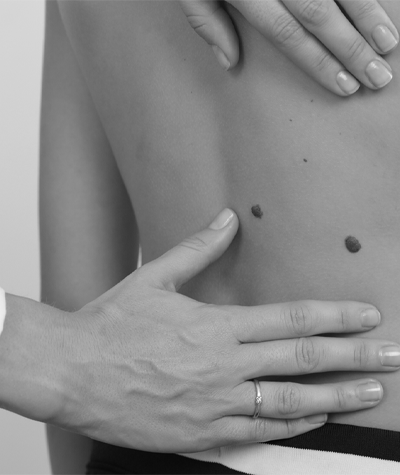Ask a question or book an appointment at our Melbourne clinics
Leave any questions you have below along with your details and our team will get in touch with you as soon as possible.

Skin Cancer Treatments
In choosing the best treatment option, Dr Sally will consider your age and general health, the type and size of cancer, and where it is on your body. Based on the medical assessment and understanding your expectations, Dr Sally can help to tailor an individualised plan for you.
Surgical
Surgical removal of skin cancer remains a mainstay treatment option.
The surgery will be performed with the patient under local anaesthesia with or without sedation or general anaesthesia. Dr Sally may be able to perform this in her procedure room if it is simple excision.
After the skin cancer is removed, the defect is directly closed or reconstructed with skin grafts or local flaps. A skin graft is a thin piece of skin removed from one area of the body and transferred to the wound site. A local flap uses healthy adjacent tissue to resurface the wound. Dr Sally will discuss the reconstructive option with you before the operation. Dr Sally’s primary goal is to ensure adequate cancer clearance.
Surgical clearance of lymph nodes in the neck, armpit and groin may be required if the cancer has spread to the nearby lymph nodes.
Following skin surgery, it is important to follow all wound care instructions. Try to limit movement that may stress the wound and the sutures. You will be reviewed by Dr Sally after the surgery to discuss the result and receive ongoing dressing care. Sun exposure to the wound may result in irregular pigmentation and scars may become raised or red. It is important to use a silicone product with UV protection over the scar to obtain optimal results.
Non-Surgical
Non-surgical options may be suitable for certain cancer subtypes and based on a patient’s preference
Topical creams such as Aldara and Effudix can be used to treat certain subtypes such as superficial BCC and squamous cell carcinoma in situ. The cream will be applied over 4 to 6 weeks and works by generating an inflammatory response to clear the cancer cells.
Other treatments such as radiation and immunotherapy or chemotherapy may be used as an additional treatment post-surgery. Immunotherapy may occasionally be given before the surgery to reduce the tumour size and facilitate surgical excision.
Be Sun Smart
- Slip on protective clothing
- Slop on SPF 30 or higher sunscreen – make sure it is broad spectrum and water resistant
- Slap on a hat
- Seek shade
- Slide on some sunglasses
Frequently Asked Questions
Melanoma is a dangerous form of skin cancer that originates from the cells that produce pigment, known as melanocytes. This type of cancer is usually the result of exposure to harmful UV radiation from the sun or tanning beds. Early detection and treatment are crucial for a positive outcome, as melanoma can spread to other parts of the body.
Start your surgical journey with Dr Sally Ng
If you are looking to achieve a particular result, Dr Sally Ng in Melbourne offers various aesthetic and reconstructive surgical procedures to help you.
For more information or to request a consultation, please contact us today.
